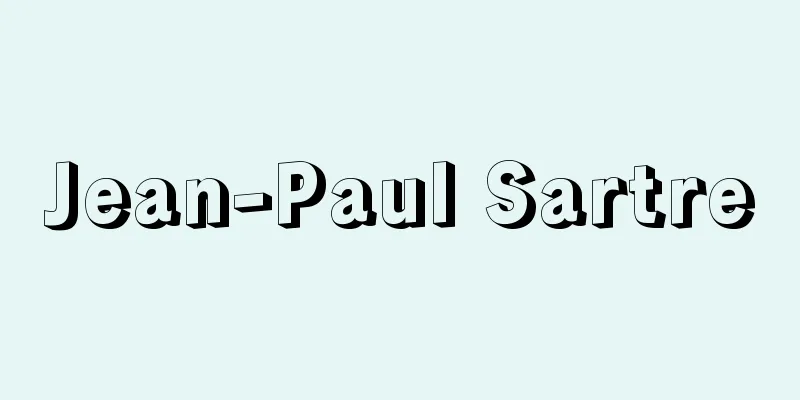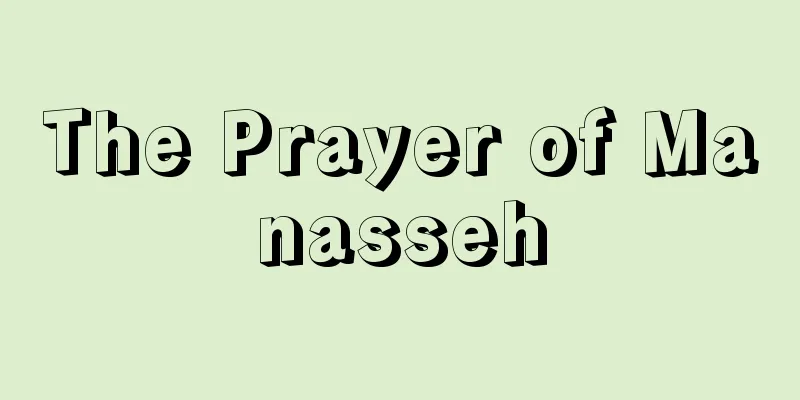Jean-Paul Sartre

|
French philosopher and writer. He is also an intellectual who had a global impact after the Second World War by attempting to synthesize atheistic existentialism and Marxism. Born on June 21st in Paris to a middle-class family. He lost his father at the age of two and was raised by his maternal grandfather. When he was young, he became almost blind in his right eye, and thereafter had to rely entirely on his left eye, which became the indirect cause of his misfortune in later years. He met Nizan while attending the École Normale Supérieure (Ecole Normale Supérieure), and they continued to be close friends even after he went on to study at the École Normale Supérieure. It was around this time that he met Beauvoir, with whom he formed a lifelong comradeship and affection. He taught at the École Supérieure des Hautes Etudes in Le Havre from 1931, but studied in Berlin from 1933 to 1934, where he learned Husserl's phenomenology. This resulted in a series of philosophical essays, such as "Imagination" (1936), "Transcendence of the Ego" (1937), and "The Problem of Imagination" (1940), which laid the foundations of Sartre's thought. While writing these philosophical essays, he published the full-length novel "Nausea" (1938), and established his position as a writer with his rigid writing style and bold themes backed by philosophy. At the time, Sartre was pursuing human freedom based on the freedom of consciousness, and it was in "Being and Nothingness" (1943) that he theoretically systematized this idea. In this great work, his fundamental task was to grasp human beings as they really are as conscious beings, and this path of thorough self-awareness, together with the idea of freedom, would go on to shape his consistent methodological attitude. During World War II, he was drafted, taken prisoner, and sent to a German internment camp, but was released under the pretense of illness and returned to Paris. He attempted to organize a resistance movement against Germany, but it was dissolved without any success and he patiently waited for the end of the war. During this time, he wrote and performed plays such as "The Flies" (1943) and "No Exit" (1944), marking his first steps as a playwright. After the war, as the leader of a group based in the magazine Les Temps Modernes (Contemporary), he actively advocated for militant humanism. His presence had a strong appeal to young people in the turmoil of the postwar period, and he quickly became the focus of attention not only in France but also among postwar activists around the world. His subsequent activities can be roughly divided into four periods. [Michihiko Suzuki, May 19, 2015] 1945-1950The first period was an extension of Being and Nothingness, and was the time when he advocated "the literature of engagement" in What is Literature? (1947). At the time, the severe conflict between the United States and the Soviet Union dominated the world's political situation, but he sought a "third way" and actively participated in a movement called the Revolutionary Democratic Union. However, not only were these political actions completely ineffective, but his literary theory, which sought extreme effectiveness in works, also eventually reached an impasse. This was why the full-length novel Roads to Freedom (1945-1949), which he put his greatest efforts into at the time as an implementation of "the literature of engagement," was abandoned unfinished. [Michihiko Suzuki, May 19, 2015] 1950-1955However, in his second period, he completely abandoned the "third way" and, especially after writing his lengthy essay "Communists and Peace" (1952-1954), he became an ally of the Communist Party and actively participated in the anti-war and peace movement. On the other hand, in terms of literature, rather than seeking direct effectiveness in his works, he sought deeper values in literature, thus publishing his magnum opus, Saint Genet (1952). This is counted among Sartre's greatest masterpieces, and can be said to be the result of the "existential psychoanalysis" predicted in Being and Nothingness. It is noteworthy that in this work, rather than abstract freedom, he seeks in literature the liberation of humans who are alienated by others and circumstances through the strong subject of Jean Genet. Thus, literature was positioned not as political, but as a deepened engagement. This is also the reason why he was able to write extremely fulfilling plays during this period, such as The Devil and God (1951) and Keen (1953). During this time, not only did he part ways with Camus, with whom he had briefly collaborated after the war, over a debate over rebellion and history (1951-1952), but Merleau-Ponty, the political leader of the magazine Les Temps Modernes, also left (1953), and thus Sartre and Beauvoir were the only remaining core members of the magazine from its founding days. [Michihiko Suzuki, May 19, 2015] 1956-1960In what can be called the third period from the late 1950s to the 1960s, Sartre once again made a turn and a leap forward. The catalysts for this were the Soviet Communist Party's criticism of Stalin and the Hungarian incident (both in 1956), as well as the Algerian War of Independence (1954-1962). He clarified his position at each stage, and it is no exaggeration to say that his statements attracted attention from almost the entire world. That is how unshakable his reputation was as the most prominent intellectual of the postwar period. In particular, his support for the armed struggle for colonial independence not only meant that he gained a powerful ally for the Algerian National Liberation Front (FLN), but also played a major role in raising awareness of the importance of the "Third World." Although this series of actions was completely at odds with the Communist Party's policies, Sartre fully accepted Marxism ideologically and tried to complement it with existentialism. This resulted in Critique of Dialectical Reason (1960), which aimed for a structural and historical anthropology. However, this was discontinued after the first volume was published, and its influence was never fully realized. An important work from this period was the play The Prisoners of Altona (1959), which attempted to dramatize history. In 1964, he was nominated for the Nobel Prize in Literature, but he refused to accept it, mainly because of the Nobel Prize's political bias. [Michihiko Suzuki, May 19, 2015] Late 1960s and laterThe student movement that took place on a global scale in the late 1960s, especially the May Revolution in France (1968), had a profound impact on Sartre. On the one hand, he published the extensive Flaubert theory that he had been working on, The Fool at Home (volumes 1 and 2, 1971, volume 3, 1972), while on the other hand, he supported a small organization (Mao faction) influenced by China's Cultural Revolution, and in order to defend its organ newspaper, which had been banned and confiscated, he took on the role of editor-in-chief himself and distributed the newspaper on the streets, showing a move to finally break away from his previous intellectual behavior. However, his body had already deteriorated, and his only remaining left eye had become almost blind since 1973, making it impossible for him to read or write. Thus, the fourth volume of The Fool at Home was never written. He continued to make statements in interviews and other occasions, but in his later years, he lost most of his practical influence, and his final years were by no means happy, despite his brilliant fame. Nevertheless, when he died on April 15, 1980, French newspapers devoted several pages to reporting the event extensively, and on the day of his funeral, tens of thousands of people spontaneously formed a long procession behind his coffin to bid farewell to the greatest untitled giant in post-war history. [Michihiko Suzuki, May 19, 2015] "The Complete Works of Sartre, translated by Ibuki Takehiko et al., 38 volumes (1950-1977, Jinbun Shoin)" ▽ "The Road to Freedom, translated by Ebisaka Takeshi and Sawada Nao, 6 volumes (Iwanami Bunko)" ▽ "Sartre, by F. Janson, translated by Ibuki Takehiko (1957, Jinbun Shoin)" ▽ "Sartre and His Times: A Comprehensive Chronology of His Works, by Suzuki Michihiko et al. (1966, Jinbun Shoin)" ▽ "Conversations with Sartre, by Oe Kenzaburo , Kato Shuichi et al. (1967, Jinbun Shoin)" ▽ "An Introduction to the Philosophy of Sartre, by Takeuchi Yoshiro (1972, Chikuma Shobo)" ▽ "Sartre and Marxism, by Takeuchi Yoshiro (Kinokuniya Shinsho)" ▽ "Sartre's Literature, by Suzuki Michihiko (Kinokuniya Shinsho)" [References] | | | | | | | | |Source: Shogakukan Encyclopedia Nipponica About Encyclopedia Nipponica Information | Legend |
|
フランスの哲学者、作家。第二次世界大戦後に、無神論的実存主義とマルクス主義の総合を試みて、世界的な影響を及ぼした知識人でもある。6月21日パリの中産階級の家庭に生まれる。2歳で父を失い、母方の祖父のもとで育てられる。幼いとき右眼(め)がほとんど失明状態になり、その後はすべて左眼に頼らざるをえなくなったが、これは、晩年の不幸の遠因となった。高等中学(リセ)時代にニザンを知り、高等師範学校(エコール・ノルマル・シュペリュール)に進んでからも親しい交際を続けた。そのころボーボアールと知り合い、生涯にわたる同志的な愛情を結ぶ。 1931年からル・アーブルの高等中学で教鞭(きょうべん)をとっていたが、1933年から1934年にかけてベルリンに留学し、フッサールの現象学を学んだ。そこから生まれたのが、『想像力』(1936)、『自我の超越』(1937)、『想像力の問題』(1940)などの一連の哲学論文で、サルトルの思想の基盤はこのときつくられた。これら哲学論文の執筆のかたわら、長編小説『嘔吐(おうと)』(1938)を発表し、硬質な文体と、哲学に裏づけられた大胆な主題で、作家としてもその地位を確立した。当時のサルトルは、意識の自由を根底に据えて人間の自由を追究していたが、それを理論的に体系化したのが『存在と無』(1943)である。彼はこの大著で、意識存在としての人間のありのままの姿をとらえることを基本的な課題としたのであり、この徹底した自覚の道は、自由の思想とともに、その後の一貫した方法的態度をつくりあげることになる。 第二次世界大戦中、召集され、捕虜になり、いったんはドイツの収容所に送られたのちに、病気と偽って釈放され、パリに戻る。対ドイツの抵抗組織をつくることを試みたが、それはほとんど効果をあげることもなく解消し、じっと終戦を待っていた。この間に戯曲『蠅(はえ)』(1943)、『出口なし』(1944)などが書かれて上演され、劇作家としても第一歩を踏み出した。 戦後は、雑誌『レ・タン・モデルヌ』(現代)に拠(よ)るグループのリーダーとして、戦闘的ヒューマニズムの立場で活発な発言を展開する。彼の存在は、戦後の混乱期の若者たちに強烈に訴えるものをもっており、単にフランスのみならず、たちまち世界中の戦後派の注目の的になった。その後の活動は、ごく大まかに四つの時期に分けられる。 [鈴木道彦 2015年5月19日] 1945~1950年まで第1期は『存在と無』の延長上にあるもので、『文学とは何か』(1947)のなかで「アンガージュマン(社会参加)の文学」を提唱した時期である。当時は米ソの厳しい対立が世界の政治状況を支配していたが、彼は「第三の道」を模索して、「革命的民主連合」とよばれた運動に積極的に参加する。しかし、そうした政治的行動はまったく無効に終わったばかりか、作品に極端な有効性を求めたその文学理論も、いつか行き詰まりに陥った。「アンガージュマンの文学」の実践として、そのころ最大の努力を傾けた長編小説『自由への道』(1945~1949)が未完のまま放棄されたのは、そのためであった。 [鈴木道彦 2015年5月19日] 1950~1955年しかし、第2期に入ると、「第三の道」を完全に放棄し、とくに長大な論文「共産主義者と平和」(1952~1954)を書いてからは、共産党の同伴者となって反戦・平和運動にも精力的に参加する。他方、文学的には、作品に直接の有効性を求めるのではなくて、むしろ文学にいっそう深い価値を探り、こうして大作『聖ジュネ』(1952)を発表することになる。これはサルトルの最高傑作に数えられるもので、『存在と無』で予告した「実存的精神分析」の成果ともいうべきものであるが、そこでは抽象的な自由ではなく、ジャン・ジュネという屈強な対象を通して、他者と状況とによって疎外された人間の解放を文学に求めていることが注目される。こうして文学は、政治主義的なものではなく、深められたアンガージュマンとして位置づけられた。この時期に『悪魔と神』(1951)、『キーン』(1953)などという、きわめて充実した戯曲を書きえた理由もそこにある。なおこの間に、戦後に一時協力しあったカミュと、反抗と歴史をめぐる論争(1951~1952)がきっかけで決別したばかりか、『レ・タン・モデルヌ』誌の政治的リーダーであったメルロ・ポンティもまた離れていき(1953)、こうして同誌創立当時のおもなメンバーは、ほとんどサルトルとボーボアールを残すのみとなった。 [鈴木道彦 2015年5月19日] 1956~1960年1950年代後半から1960年代にかけての第3期とよべる時期に、サルトルはいま一度転回と飛躍を遂げる。そのきっかけになったのは、ソ連共産党のスターリン批判と、ハンガリー事件であり(ともに1956)、またアルジェリア独立戦争(1954~1962)であった。彼はそのときどきに自己の立場を明確にしたが、彼の態度表明はほとんど世界中の注目を集めたといっても過言でない。それほどに、戦後のもっとも著名な知識人として、彼の名声は揺るぎないものになっていたのである。とくに植民地独立のための武装闘争を支持したことは、アルジェリア民族解放戦線(FLN)にとって強力な味方を得たことを意味したばかりか、「第三世界」の重要性を認識させるのに大いに役だった。 こうした一連の行動は、共産党の政策とまったく相いれないものであったが、その反面でサルトルは思想的にマルクス主義を完全に受け入れ、実存主義でそれを補完しようとしていた。そこから生まれたのが、構造的で歴史的な人間学を目ざす『弁証法的理性批判』(1960)である。しかしこれは第1巻を刊行したままで中絶し、その影響力も完全には発揮されることなく終わった。なお、この時期の重要な作品には、歴史の劇化を試みた戯曲『アルトナの幽閉者たち』(1959)がある。1964年にノーベル文学賞に指名されたが、ノーベル賞の政治的偏向を主たる理由として、これを拒否して受けなかった。 [鈴木道彦 2015年5月19日] 1960年代後半以降1960年代後半に世界的規模で起こった学生運動、とくにフランスの「五月革命」(1968)は、サルトルに深い影響を与えた。一方で、従来から取り組んでいた膨大なフロベール論『家(うち)の馬鹿(ばか)息子』(第1・2巻1971、第3巻1972)を発表するとともに、他方では中国の文化大革命に影響された小組織(マオ派)を支援し、発禁と押収の続くその機関紙を防衛するために、自ら編集長を引き受けたり、その新聞を街頭で配布するなどして、従来の知識人としての行動からようやく一歩脱皮する姿勢を示した。しかし、彼の肉体はすでに衰え、唯一残る左眼もまた1973年以降はほとんど失明状態になり、読書や執筆活動は不可能になった。『家の馬鹿息子』もこうして4巻目はついに書かれなかった。その後もインタビューなどに答えて発言に努めたが、それも晩年にはほとんど現実的な影響力を失い、輝かしい名声にもかかわらず、最後の数年間はけっして幸福なものではなかった。それでも、1980年4月15日に死亡したとき、フランスの各紙は数ページを割いて大々的にこれを報じ、葬儀の日には数万の群衆が自発的に柩(ひつぎ)のあとに長い行列をつくって、戦後史上最大の無冠の巨人に別れを惜しんだ。 [鈴木道彦 2015年5月19日] 『伊吹武彦他訳『サルトル全集』全38巻(1950~1977・人文書院)』▽『海老坂武・澤田直訳『自由への道』全6巻(岩波文庫)』▽『F・ジャンソン著、伊吹武彦訳『サルトル』(1957・人文書院)』▽『鈴木道彦他著『サルトルとその時代――総合著作年譜』(1966・人文書院)』▽『大江健三郎・加藤周一他著『サルトルとの対話』(1967・人文書院)』▽『竹内芳郎著『サルトル哲学序説』(1972・筑摩書房)』▽『竹内芳郎著『サルトルとマルクス主義』(紀伊國屋新書)』▽『鈴木道彦著『サルトルの文学』(紀伊國屋新書)』 [参照項目] | | | | | | | | |出典 小学館 日本大百科全書(ニッポニカ)日本大百科全書(ニッポニカ)について 情報 | 凡例 |
<<: Saltoro Kangri Mountain (English name)
>>: Salt-brown rose - Salt-brown rose
Recommend
Osueshu - Osueshu
〘 noun 〙 During the Muromachi period, a lower-rank...
Carducci - Giosuè Carducci
Italian poet and man of letters. He spent his chi...
Johan Bojer
1872‐1959 Norwegian novelist. He wrote The Great H...
Participation in a lawsuit - Sosho Sanka
The joining of a third party outside the lawsuit ...
Oksusu [river] - Okususu
…The total length is 2,620 km, and the drainage a...
Cecilia
...A legendary martyr from Rome in the 3rd centur...
autoroute
...Also, the Shuto Expressway and the Hanshin Exp...
Gallarda - Gallarda
...It was also introduced to the New World with t...
Prabandha
...The first book is on musical organization, the...
Adenylate cyclase
[EC4.6.1.1]. Also called adenylyl cyclase or adeny...
Yufuin [town] - Yufuin
A former town in Oita County, central Oita Prefect...
Tiller - Tiller (English spelling)
Lateral branches that form at the soil edge of gra...
Matsugi family
An official from the Sengoku period to the Edo per...
Fishery enterprises - gyogyokigyotai
...fishing enterprises organized as companies. Ja...
Sexual perversion
It refers to a qualitative perversion of sexual sa...









